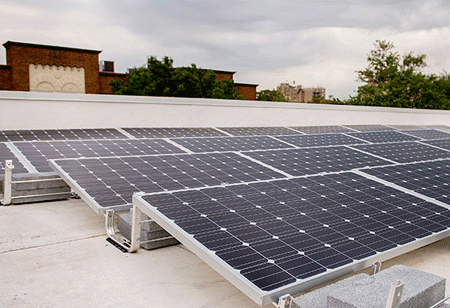THANK YOU FOR SUBSCRIBING
Generating Power from Rains using Solar Panels
Over the past decade, solar power has gained quite the popularity and has been widely used as a clean and renewable source for power generation across many countries.

By
Apac CIOOutlook | Thursday, January 01, 1970
Stay ahead of the industry with exclusive feature stories on the top companies, expert insights and the latest news delivered straight to your inbox. Subscribe today.
Over the past decade, solar power has gained quite the popularity and has been widely used as a clean and renewable source for power generation across many countries. However, since 2012, there has been a significant fall in the production cost of solar panels. According to forecasts by International Energy Agency, renewable energy resources are expected to contribute more than 40 percent of all power generation in the world by 2040.
At present, solar panels have become the first choice for many energy consumers. But, despite developments over the last decade, solar panels have failed to function under rainy conditions. Researchers in Soochow University, China has overcome this limitation to some extent with proof-of-concept experiment. They have devised a new technology that uses hybrid-type solar panels. It is known as Triboelectric nanogenerator (TENG). This allows power generation by the cell, both when sunlight falls on it and when it is raining.
A TENG is a machine that can convert mechanical energy of a moving particle into electricity. It uses this concept for rain drops by using the friction of the sliding raindrop to knock off some electrons, producing electric charge. Apart from making use of raindrops, the TENG procedure is already used to generate power from car tyres while it rolls on the road surface, when the clothing materials produce friction against each other. Apart from these applications, it is not easy to develop a TENG that can work when it rains without increasing the size or complexity of the solar panel beyond a certain limit, as they are primarily designed to fit on rooftops.
The latest hybrid solar panel’s structure is designed in such a manner that it can combine a TENG device and hetero-junction silicon solar cell together. The TENG device is composed of paired polymer layers that are placed above a photovoltaic cell or conventional solar panel. This TENG composition is ridged like a standard DVD, and uses a DVD imprint that enhances the efficiency with which it can gather frictional energy from the falling raindrops, thereby helping the solar cell to capture more sunlight. This becomes highly essential because, during rainy days, the intensity of sunlight reduces dramatically to one-tenth of the intensity it has on a normal day.
Amidst the challenges faced by the primary projects related to solar panels, it holds a promising prospect as these projects can potentially be developed at market level.
Check Out: Energy Tech Review
Check This Out: Top Renewable Energy Solution Companies





